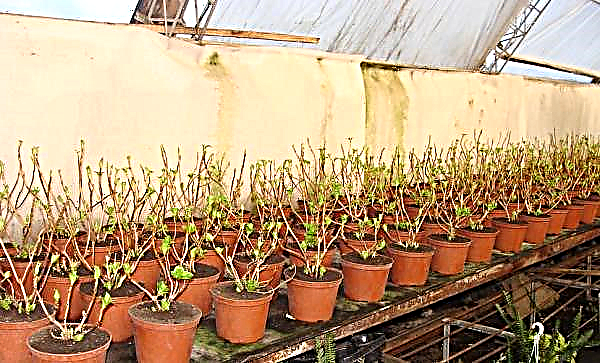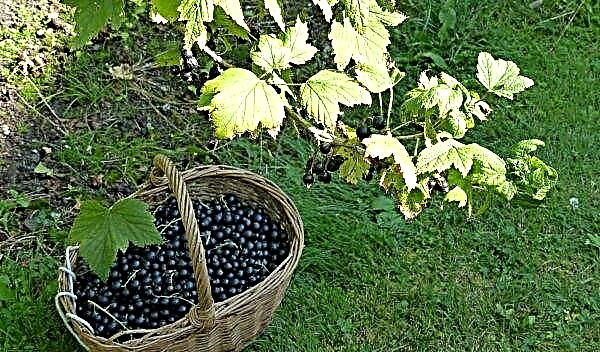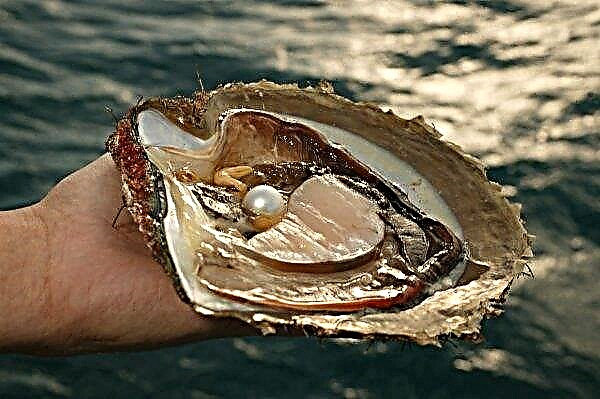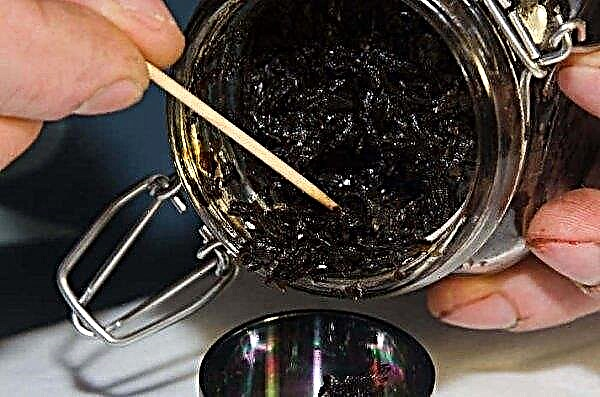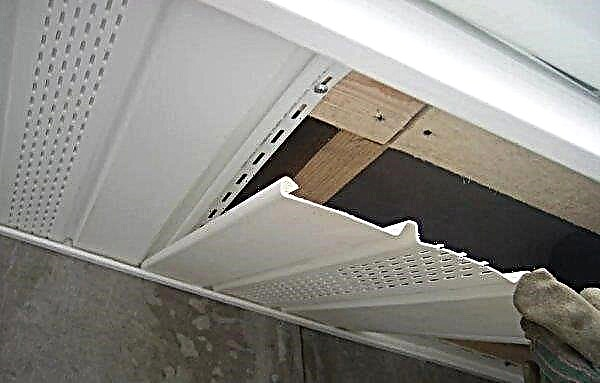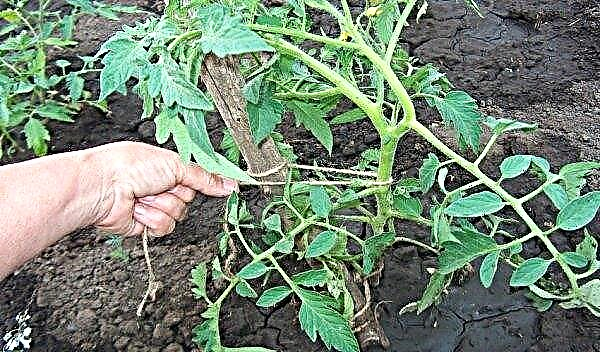Artificial ponds have become an integral part of the design of a country house. They are admired, a recreation area for adults and children is arranged near them, fish and waterfowl can be raised there. Often the owners of a home pond are faced with the fact that water leaves it. Why such an unpleasant situation occurs, where does the moisture go and how to properly carry out waterproofing - further in the article.
Reasons for leaving the pond
When planning a pond arrangement at your summer cottage, you should carefully think through everything to the smallest detail. After all, such a reservoir requires constant care. It must be periodically cleaned, monitored, if necessary, plant aquatic plants, beautifully decorated, and, if leaking, to eliminate its occurrence.
Did you know? In Russia, during the reign of Peter the Great, artificial reservoirs on the territory of country houses that were built by foreign designers came into fashion.
The main reasons for leaving the pond include:
- natural fumes - occur under the influence of the sun and cause minor moisture loss;
- damage to the waterproofing film;
- cracks in concrete or finished plastic molds;
- breakdown of pipes and other equipment providing a constant water supply.
 In the first case, there is no need to worry. You just need to add the missing amount of water in the pond. In other situations, you should find the damage that caused the loss of moisture, and eliminate it.
In the first case, there is no need to worry. You just need to add the missing amount of water in the pond. In other situations, you should find the damage that caused the loss of moisture, and eliminate it.
Ways to keep water in a pond
One of the most important stages in the construction of a pond site is its waterproofing. There are a large number of ways by which you can keep water in a pond.
The most effective and common of them include:
- clay insulation;
- finished plastic molds;
- film protection;
- concrete bowl.
 Experts recommend digging a pit under a pond with a depth of at least 60–80 cm to prevent freezing of water in the winter and excessive heating in the summer, leading to the death of growing algae and living fish in the pond.
Experts recommend digging a pit under a pond with a depth of at least 60–80 cm to prevent freezing of water in the winter and excessive heating in the summer, leading to the death of growing algae and living fish in the pond.
Clay insulation
To prevent the loss of water in a pond using clay (coastal or underground), you can do the following:
- Dig a pit slightly larger (approximately 50 cm from the planned one) with inclined walls.
- Stir the clay with water until a homogeneous mass with a paste-like consistency is obtained.
- Sprinkle the surface of the pit with wood ash or soot.
- Cover the bottom of the pit with a layer of clay (15 cm), ramming it as it dries.
- After the first coat dries, apply the next 30 cm thick.
- Allow the clay to dry completely.
- Pour small gravel with a thickness of up to 4 cm into the pit, tamp.
- Add a layer of sand (5–7 cm) on top.
- Fill a reservoir with water under low pressure.
 The installation of additional layers at the bottom of the pond will protect it from leaching of clay, make the water cleaner and provide moisture retention.
The installation of additional layers at the bottom of the pond will protect it from leaching of clay, make the water cleaner and provide moisture retention.
Ready-made plastic molds
The easiest way to waterproof a pond is to install prefabricated plastic molds made primarily from plastic with fiberglass. This method does not require any special installation, long time.
Important! When deciding to make a pond on your site, you must also choose the right place for it and calculate the optimal dimensions of the future reservoir.
The installation of plastic containers is carried out according to this principle:
- Under the form you need to dig a pit 5–10 cm larger than a plastic tank.
- Tamp the walls and bottom of the pit, choosing stones or tree roots from the ground.
- Pour a layer of sand 5 cm thick at the bottom of the pit.
- To improve waterproofing, the soil can be covered with geotextiles.
- Insert the form into the pit, pour a small amount of water to check the horizontal.
- If everything is done correctly, fill the openings between the plastic container and the pit with wet sand.
- Decorate the pond to your taste.
 Despite the simplicity and ease of installation of plastic containers, they have some disadvantages: a small selection of forms, small sizes of artificial reservoirs, poor resistance to climate change, and a short service life.
Despite the simplicity and ease of installation of plastic containers, they have some disadvantages: a small selection of forms, small sizes of artificial reservoirs, poor resistance to climate change, and a short service life.
Film insulation
The most common waterproofing of artificial ponds is film. It has a number of advantages compared to other methods: a pond can be made of any size and shape, a large selection of various films, a small cost of material, can be easily replaced, withstands sudden changes in temperature.
Film insulation is carried out according to the following scheme:
- You can dig a pit at your discretion.
- The bottom of the pit must be leveled, all stones or other objects that can damage the waterproofing material should be removed.
- Cover the surface of the pit with a layer of fine and clean sand (5 cm).
- Lay the sheet without tension around the entire perimeter of the pit, fix the edges with bricks.
- Fill the pond with water.
- Wait a day for the film to take the desired shape.
- Cut off excess polyethylene, leaving 25 cm for the blind area.
 Of the visible disadvantages of film waterproofing, the shortest service life is the most significant.
Of the visible disadvantages of film waterproofing, the shortest service life is the most significant.
Concrete pond for pond
Often concrete is used to establish a pool or fish pond. The artificial reservoir of cement is quite reliable and lasts a very long time.
Did you know? The largest pool in the world is located on the coast of Chile, whose length is more than 1 km.
To do the job efficiently, you need to follow these tips:
- The process of concreting the pond bowls must be carried out within one day.
- Dig a pit with sloping walls.
- Thoroughly compact the earth, selecting all the stones.
- Cover the entire surface of the pit with a plastic film.
- Cover the polyethylene material with a layer of concrete of at least 10 cm.
- Insert reinforcement or metal mesh into concrete.
- Cover with another layer of concrete 5 cm thick.
- Seal and level the walls of the bowl.
- When the structure hardens, apply liquid glass.
 The disadvantage of concreting a reservoir is its high cost, which exceeds other methods.
The disadvantage of concreting a reservoir is its high cost, which exceeds other methods.
There are many ways to make an artificial pond in your summer cottage. All of them have their pros and cons. Each summer resident chooses for himself the most optimal of them and must strictly adhere to the recommendations of specialists in order to get a good result.


